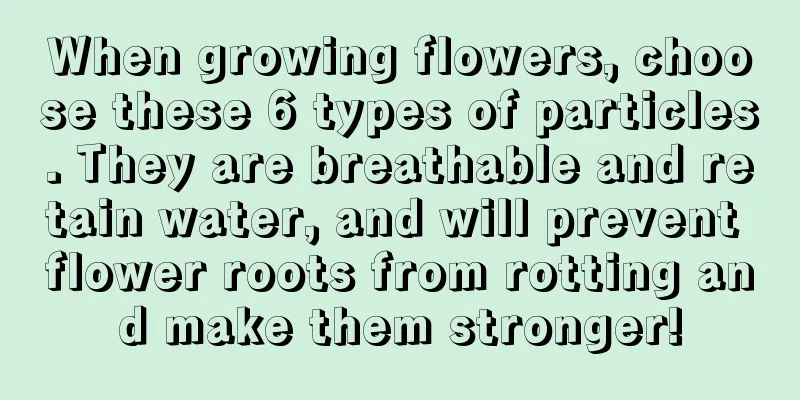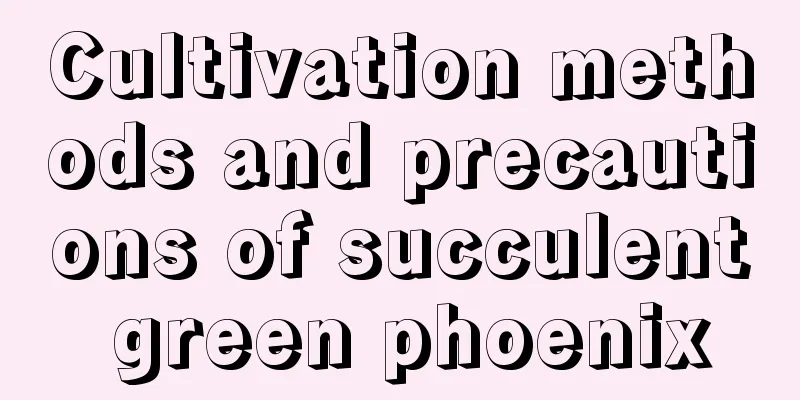When growing flowers, choose these 6 types of particles. They are breathable and retain water, and will prevent flower roots from rotting and make them stronger!

ClayExpanded clay, also known as foamed stone, is fired at high temperatures and has many small holes on its surface, which facilitate water and air permeability. We usually put expanded clay at the bottom of the pot or use it as a paving surface to absorb excess moisture and prevent root rot. If expanded clay is used to pad the bottom of the pot, just spread it on the bottom of the pot. It is usually placed in a deeper pot for paving, about 5 cm above the surface of the flower soil, leaving a distance above for easy watering. coarse sandCoarse sand, also known as river sand, is a material with very good drainage and air permeability. Generally, we will mix it with nutrient soil in a 1:1 ratio to make flower soil. Coarse sand can effectively prevent soil compaction, allow for ventilation and drainage, and prevent plant root rot. Coarse sand can be used as a culture medium for rooting of green plant cuttings, with good results. Bricks and tilesBricks and tiles also have good drainage properties, and they can also absorb excess water to prevent plant root rot. When using, you should first knock the bricks and tiles into small pieces of about 1 cm. When padding the bottom of the pot, be careful not to let it block the drainage holes. It can also be used as paving. Wood chipsSawdust has good properties of looseness, air permeability, water permeability and water retention. It also has strong heat preservation properties and is very beneficial to the growth of plant roots. Fresh wood chips must be composted before they can be mixed into the soil. Put the sawdust in a plastic bag, pour in clean water, seal it, and expose it to the sun. After 1 to 2 months, the color will turn black and the decomposition is complete. After the well-rotted sawdust is dried, it can be mixed into the soil or used as paving. Using sawdust to grow orchids can prevent the orchid's root system from rotting and help it grow stronger. charcoalThe texture of charcoal is relatively loose, which not only has strong drainage and air permeability, but also good moisturizing properties. It can also provide a good temperature and humidity environment for plants, prevent root rot, and promote the healthy growth of flowers. When using, first break the charcoal into small pieces of about half a centimeter, wash it repeatedly with water and dry it, then mix it evenly with garden soil in a ratio of 1:2, and use it as potting soil. cinderCompletely burnt coal slag has many small holes, which gives it good drainage and ventilation properties. The trace elements it contains can also provide nutrition for flowers. Be careful not to use black, unburned coal slag. After knocking the coal slag into extremely small particles, wash it repeatedly with clean water to remove the alkali. It is best to soak it for 2 to 3 days, otherwise it will easily cause the leaves of the plants to turn yellow and the roots to rot. Mix the processed coal slag and garden soil in a ratio of 1:2 to prepare flower soil, which can not only allow drainage and ventilation but also provide nutrients to the flowers. Well, that’s all for today. The flowers at home have poor drainage and are prone to root rot Just try it now! |
>>: How to grow orchids to thrive
Recommend
Benefits of Astragalus
Nutrition Astragalus contains many nutrients, suc...
Is Cosmos poisonous?
1. Is it toxic? This is a non-toxic flower and ca...
What are the flower languages of dahlia?
Dahlia Good Luck From the outside, the dahlia has...
How to grow hydrangea
Hydrangea Growing Conditions Hydrangea prefers wa...
Cultivation methods and precautions of Granma grass
1. Soil Grammar grass has low requirements for so...
How to grow gourds on the balcony How to grow gourds so that they grow more and better
It is good to plant gourds on the balcony. Gourds...
Why the number of wintersweets blooming decreases year by year
No strength pruning and pinching After each flowe...
How much is the price of Cistanche deserticola? Pictures of Cistanche deserticola
1. Introduction Cistanche deserticola is a parasi...
What to do if the leaves of the dragon beard tree turn yellow and dry
1. Reduce watering Reason: If you do not scientif...
The bonsai I bought for 100,000 yuan died before the end of summer. I’m so heartbroken!
Bonsai is different from ordinary potted plants. ...
How long is the growth cycle of spinach?
Introduction to Spinach Growth Spinach is suitabl...
How much profit can be obtained from chestnut planting? Benefits and prospects of chestnut planting
The chestnut production in my country cannot meet...
The correct way to water flowers with overnight tea The correct way to water flowers with overnight tea
It is very good to use overnight tea to water flo...
These flowers must be cut now, otherwise they will be so ugly in the fall!
1. Asparagus fern 1. The asparagus fern in the pi...
How to grow Begonia in winter? Can it be propagated by cuttings in winter?
1. How to grow Begonia in winter 1. Environmental...









